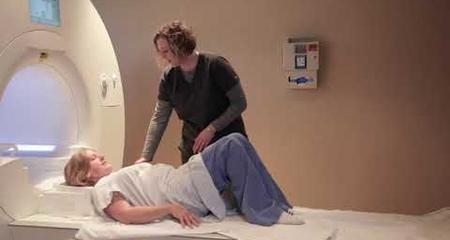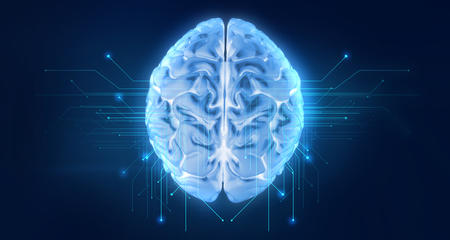Chiari malformation (CM) is a condition in which part of the brain is displaced into the spinal canal. It is most commonly caused by structural defects in the skull. When the base of the skull is too small or misshapen, it causes the cerebellum to be displaced into the upper spinal canal. In doing so, it causes the compression of the brain stem. There may also be a disturbance of cerebrospinal fluid (CSF) flow.
Chiari Malformation Symptoms
According to the National Organization for Rare Disorders, CM symptoms vary greatly between individuals. Some people with CM experience no symptoms and need no treatment. In other cases, even a small protrusion of the cerebellar tonsils (3 mm or less) can cause symptoms. The most common CM symptoms include:
- Headaches, especially after coughing, sneezing or straining
- Dizziness
- Neck pain
- Muscle numbness or weakness, especially in the arms and legs
- Numbness and tingling
- Poor hand coordination
- Difficulty with memory and concentration
- Balance disturbance
- Chronic nausea
- Blurred or double vision
- Issues with bowel and bladder control
- Sleep apnea
In general, straining and exertion can worsen CM symptoms. Pregnancy can also temporarily accentuate the symptoms.
Diagnosis
Chiari malformation is considered a congenital condition, but symptoms usually present in adult life. A CM diagnosis is most often confirmed through an MRI. A complete medical history and neurological examination are required to determine the significance of any MRI finding.
Some cases of chiari malformation are asymptomatic or may be misdiagnosed as other conditions. The increased use of MRI scans shows that CM may be more common than previously suspected. CM is more common in women than in men. Some CM cases have proved to run in families, but research into a hereditary component is still in the early stages.
Types of Chiari Malformations
Chiari malformation type I, the most common form of this condition, usually presents in adulthood and consists of the displacement of the portion of the cerebellar tonsil through a hole at the base of the skull. The only treatment is surgical decompression.
Chiari malformation type II is also called Arnold-Chiari malformation. In this condition, both the cerebellum and brain stem extend through the opening at the base of the skull. This condition is only seen in children born with a form of spina bifida called myelomeningocele. The symptoms of type II can be much more severe than those associated with type I. Type II can cause potentially life-threatening complications in infancy or childhood. Surgery may be required to treat it in some cases.
The rarest forms of this condition are Chiari malformation type III and type IV. In type III, the cerebellum and brain stem herniate through an abnormal opening in the back of the skull. This is diagnosed during pregnancy or at birth and can cause severe neurological problems. In type IV, the cerebellum is incomplete or underdeveloped. This is usually fatal during infancy.
Types II, III and IV would be treated at a pediatric hospital or health system, such as Children’s Wisconsin.
Complications
Common complications associated with CM include:
- Hydrocephalus. This accumulation of excess CSF within the brain can occur because CM blocks the flow of that fluid. The build-up can be relieved with a shunt, which drains the fluid to another body cavity for reabsorption.
- Syringomyelia. In this disorder, a cyst, or syrinx, filled with CSF forms in the spinal cord. It can cause weakness and a lack of sensitivity to pain and temperature.
- Scoliosis or spinal curvature. A curving of the spine is usually an uncommon complication in people with CM type I, unless they also have a large syrinx or a tethered cord.
- Tethered cord syndrome. This is a congenital disorder characterized by a restricted motion of the spinal cord. This may result in trauma to the lower portion of the spinal cord over time. This can lead to leg pain, bowel and bladder problems and scoliosis. Those born with myelomeningocele are at an increased risk of developing tethered cord syndrome.
Chiari Malformation Surgery
Treatment options for CM vary depending on the severity of the condition. If people with the condition have no symptoms, their doctors will simply monitor the malformation. CM symptoms such as headaches and dizziness may at times be successfully treated with medication. However, if a CM seriously impairs a person’s quality of life, surgery is indicated.
The goal of surgery is to enlarge the hole in the base of the skull to relieve pressure on the brain and brain stem and improve CSF flow. The American Association of Neurological Surgeons advises that while surgery can reduce symptoms in some patients, it cannot reverse permanent nerve damage. Repeat surgeries should not necessary.
If you've previously received CM surgery elsewhere and your symptoms reoccur, you may have had a failed surgery. We are happy to provide a second opinion if your symptoms have returned or gotten worse.
Physicians and neurosurgeons at the Froedtert & the Medical College of Wisconsin health network have the expertise to accurately diagnose CM and provide treatment options that are most appropriate for each patient.
Before Your Appointment
Please download, print and complete this questionnaire. Then, mail or deliver it in person, along with the MRI scan of your brain or cervical spine, to:
Froedtert & the Medical College of Wisconsin SpineCare
1155 N. Mayfair Road, Suite 200 Milwaukee, WI 53226
Phone: 414-955-7188
Fax: 414-955-0110
Virtual Visits Are Available
Safe and convenient virtual visits by video let you get the care you need via a mobile device, tablet or computer wherever you are. We'll assess your condition and develop a treatment plan right away. To schedule a virtual visit, call 414-777-7700.
BLOGS, PATIENT STORIES, VIDEOS AND CLASSES





